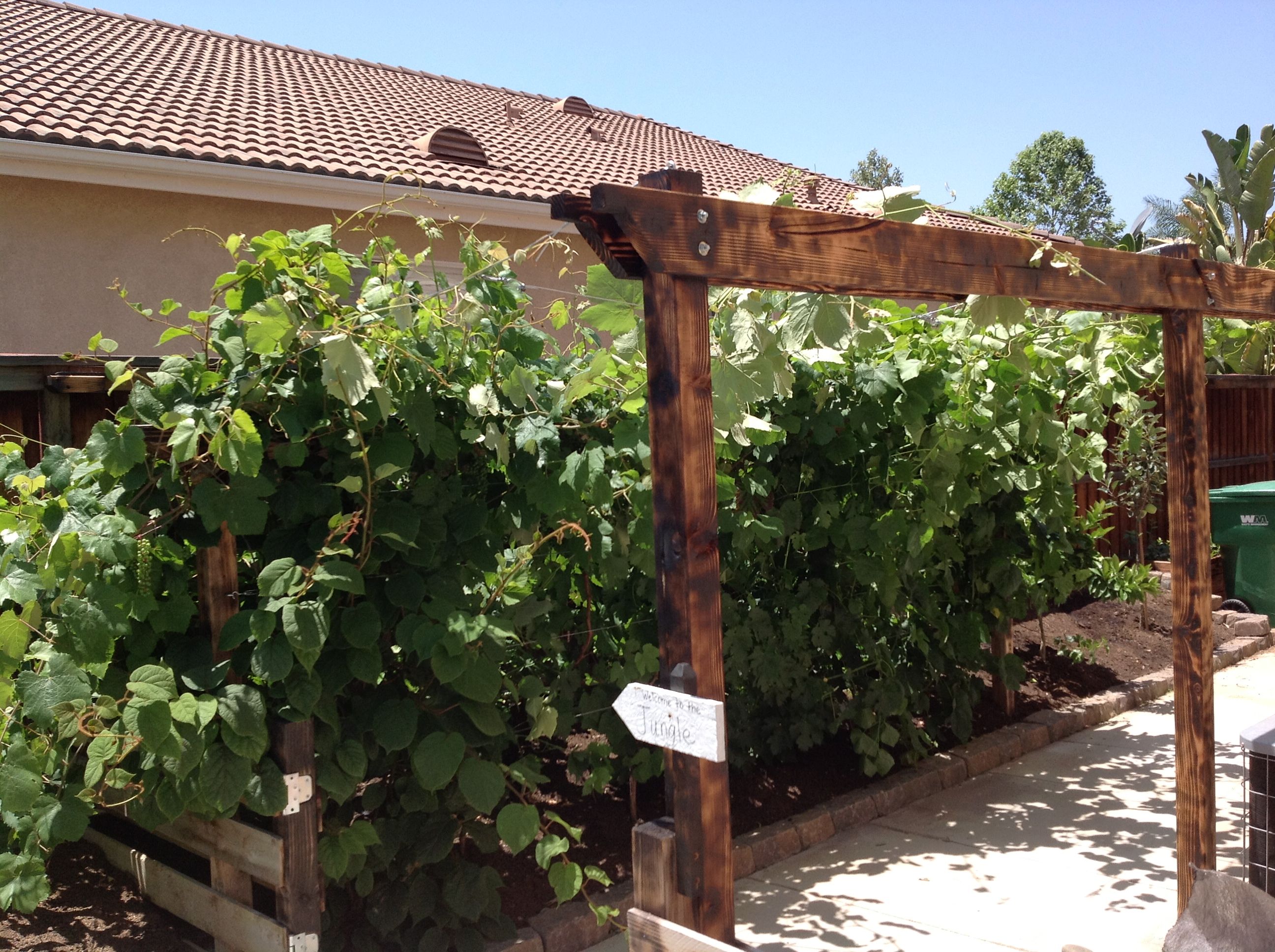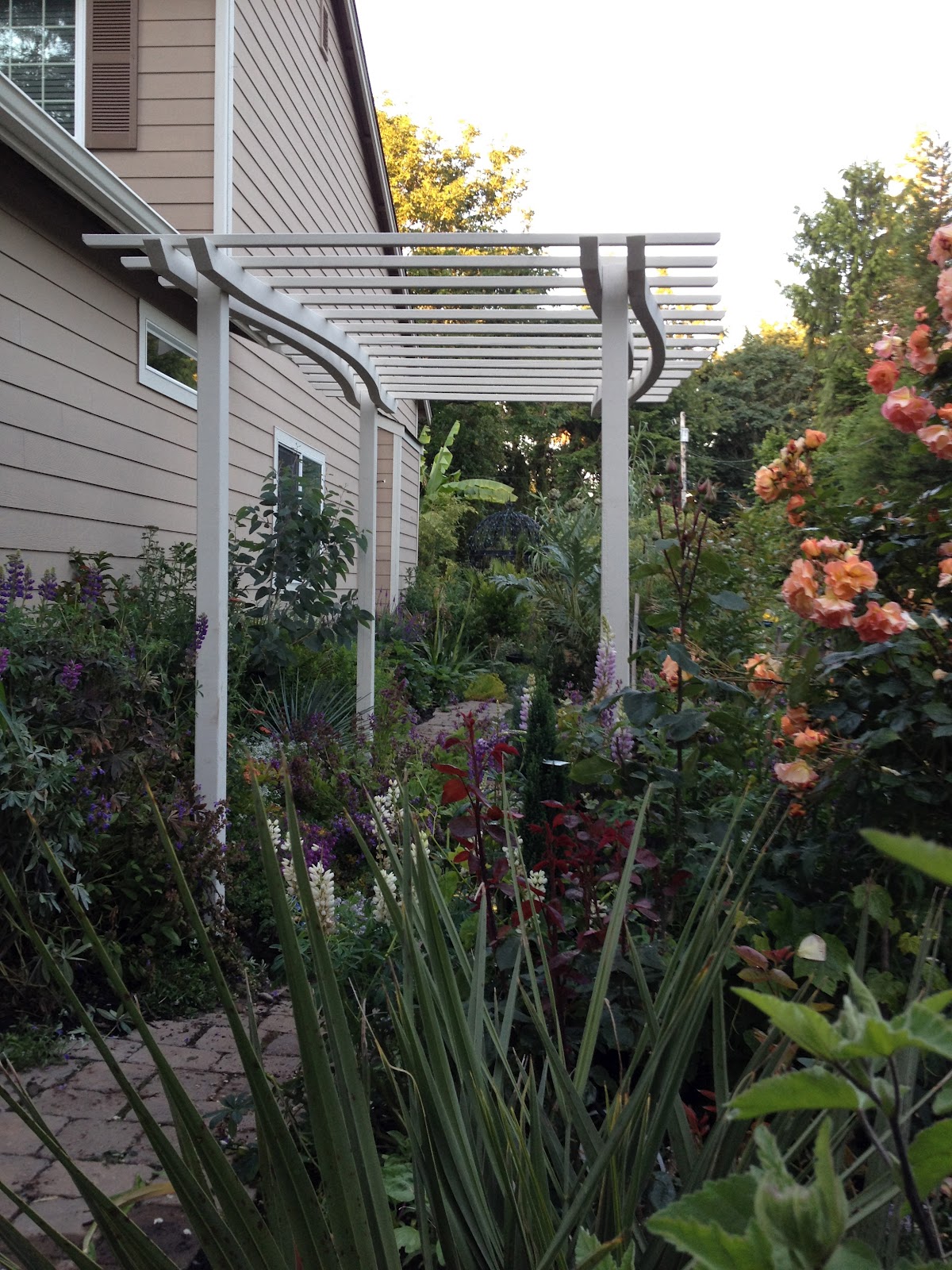


Fence stainers, available from livestock supply houses, can also be used at one end of the trellis for easy tightening. Periodic tightening after pruning is needed as the wire stretches over the years. Wrap the wire around the post several times and use a staple driven into the side of the post to hold the wire wrappings (Fig.5). Put a second staple in the side of the post just below the top. At the other end of the trellis, staple the wire loosely to the top of the end post.Tighten the wire with a fence stainer or claw hammer, then hammer the end staple down just enough to hold the wire from slipping. If the wire is bound too tightly by the staple, it may break when tightened. Leave the top staple loose enough so that the wire is not held rigidly. Staple the wire to the top of the post with 2 ½ inch “pole barn” staple. Bring the wire up and put another staple in it on the side of the post before going over the top of the end post.

Start by wrapping the wire around the upper part of the end post, then stapling it to the side of the end post. Use number 9 galvanized wire or 12.5 gauge high-tensile fence wire.High-tensile strength wire is more difficult to handle than than number 9 wire. Line posts holes can be dug with an auger or post hole digger.If a good job subsoiling is done, the soil will be very soft in the row and easily excavated with a post hole digger. Spacing on the line posts is typically 20 feet. Wooden line posts, 3 to 4 inches in diameter and 7 feet long, should be set so that the wire will be 5 feet high.Usually the line posts are set 2 feet deep.However, growers on “tight” soil sometimes set 6.5 foot posts 1.5 feet deep with good results. Note how the end post is sloped back slightly. Several different bracing systems can be used.įigure 4. End posts can also be set with a post driver. End posts holes can be dug with an auger or post hole. Set the end posts 3 feet in the ground so the trellis wire will be 5 feet high. One-Wire Trellis End posts should be at least 5 inches in diameter and 8 feet long. A span of 600 feet is also the maximum safe stress load for No.9 wire. If the vineyard site is best suited to long rows, break the rows into sections 400 to 600 feet long, leaving a gap 30 feet wide for convenience of movement through the vineyard. Since row widths are such that vineyard machinery can move only in one direction at a time, without room to turn around, extremely long rows should be avoided. Most experienced growers prefer the one wire trellis because of ease of establishment, pruning, harvesting, and renovation. In sizeable plantings where mechanical harvesters and pruners will be used, the one-wire trellis is recommended. All wood products used in the vineyard should be pressure treated with wood preservatives (or of a specially durable wood type you know will last in your area). Since the trellis is relatively permanent, it should be strong enough to support a heavy crop and made of durable materials that will last for many years. Trellis construction is the most expensive step in establishing a muscadine grape vineyard. Muscadine single wire trellises normally have the wire 5 feet about the ground.The 5 foot trellis has been the most popular with Georgia growers since it allows for better air circulation that shorter trellises.


 0 kommentar(er)
0 kommentar(er)
